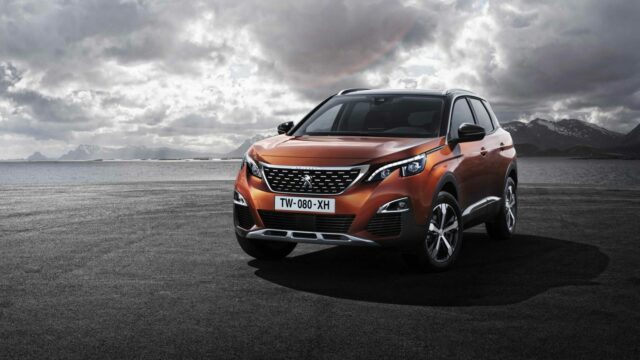The second-generation Peugeot 3008 looks like an SUV but lacks all-wheel drive






































Peugeot has released the first photos and details of the second generation 3008 crossover, which will have its world debut at the Paris Motor Show in October. The French automaker says the new 3008 is its most advanced vehicle to date, thanks to features like the latest-generation Peugeot i-Cockpit, high-tech equipment, and efficient engines.
Sized to compete with models like the Nissan Qashqai, Renault Kadjar or VW Tiguan, the 3008 ditches the MPV looks of the first generation model for an SUV appearance. It also moves upmarket, with every model equipped as standard with the latest-generation Peugeot i-Cockpit interior concept.
Design-wise, the 3008 reminds of the 2008 thanks to the similar headlights, chiseled surfaces, gaping chrome grille, tall waistline, and higher ground clearance. It also features plastic cladding and shaped roof bars for a more rugged appearance. Apart from its bigger footprint, the 3008 distinguishes itself from the 2008 thanks to the "floating roofline", smoked LED taillights united by a gloss black band, and a larger number of chrome inserts.
The highlight of the new 3008 is the interior, though, thanks to the futuristic Peugeot i-Cockpit dashboard. It features a compact steering wheel flattened both on the top and bottom, as well as two large displays – a tablet-like 8-inch touchscreen placed on top of the center console, accompanied by six piano-key "toggle switches", and a 12.3-inch screen with futuristic graphics that replaces the conventional instrument panel. The latter can be completely configured and personalized, with five different display modes controlled by a knob on the steering wheel.
Peugeot says the interior features "inspired" material choices such as leather, brushed chrome, carbon trim or cloth decoration – the latter inspired by home design. Available technologies include 3D connected navigation, Advanced Grip Control for light off-road trips, and Hill Assist Descent Control. A suite of Advanced Driver Assistance Systems such as Active Safety Brake and Distance Alert, lane departure warning, speed limit sign recognition, Adaptive Cruise Control with Stop function, Visio Park all-around vision and the latest generation Park Assist.
Based on the new EMP2 platform, the Peugeot 3008 is 100 kg lighter on average than its predecessor, despite being 80 mm longer. Most of the length increase is found in the wheelbase (2,675 mm), which translates into increased passenger and luggage space. The width and height remain unchanged while cargo volume is almost 90 liters bigger than in the previous model: 520 liters under the luggage cover and 1,580 liters with the rear seats folded down.
The engine lineup includes two gasoline and four diesel units, offered with five- and six-speed manual gearboxes as well as six-speed automatic transmissions. Fans of gasoline engines can choose between a 1.2-liter three-cylinder turbocharged engine with 130 PS (128 hp) and a 1.6-liter turbo four with 165 PS (163 hp). The diesel range includes a 1.6-liter four-cylinder unit available with either 100 PS (99 hp) or 120 PS (118 hp), and a 2.0-liter four-cylinder engine with either 150 PS (148 hp) or 180 PS (178 hp). The most eco-friendly version is the entry-level diesel, which emits 100 g/km CO2. All these versions are front-wheel drive – there's no announcement so far on possible all-wheel drive variants.
